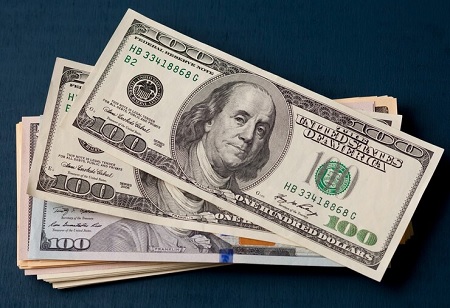
US Dollar Bracing for Inflation, Yen Gains on BOJ Comments

 As the release of U.S. inflation figures approached, the strength of the U.S. dollar remained steady, potentially impacting interest rate expectations. Meanwhile, the yen stabilized following statements from Bank of Japan officials suggesting a possible departure from extremely accommodative monetary policies. Bitcoin continued its upward trajectory, surpassing $63,000 overnight amid increased investment in new U.S. bitcoin exchange-traded funds. With a gain of over 45 percent this month, its largest since December 2020, the cryptocurrency is nearing a record high above $69,000.
As the release of U.S. inflation figures approached, the strength of the U.S. dollar remained steady, potentially impacting interest rate expectations. Meanwhile, the yen stabilized following statements from Bank of Japan officials suggesting a possible departure from extremely accommodative monetary policies. Bitcoin continued its upward trajectory, surpassing $63,000 overnight amid increased investment in new U.S. bitcoin exchange-traded funds. With a gain of over 45 percent this month, its largest since December 2020, the cryptocurrency is nearing a record high above $69,000.
Investors are pressuring the yen due to the perception of near-zero short-term rates in Japan, contrasted with persistently elevated interest rates in the U.S. and Europe. This dynamic has led to the selling of the Japanese currency in pursuit of higher returns elsewhere. In February, the yen depreciated by 2 percent against the dollar and 2.7 percent against the euro, marking its most significant monthly decline against the euro since last June and pushing it to its lowest levels in three months.
Following remarks from BOJ board member Hajime Takata advocating for a potential overhaul of the central bank's ultra-loose monetary policy, including the possibility of exiting negative interest rates and bond yield control, the yen appreciated by 0.60 percent to reach 149.77 per dollar. "Markets have been dovish in terms of the timing on BOJ move... Takata's remarks should add to conviction that an earlier-than-expected hike at the March meeting should not be ruled out", said Christopher Wong, currency strategist at OCBC.
Earlier in the session, the yen depreciated to 150.68 per dollar, nearing its lowest level since October at 151.74 and approaching levels that triggered government intervention in 2022. Masato Kanda, Japan's top currency diplomat, reiterated during the G20 finance leaders meeting in Sao Paulo that the government is closely monitoring currency fluctuations "with a strong sense of urgency" and is prepared to take action if necessary.
The New Zealand dollar remained subdued amid expectations that rate hikes in the country have concluded. It was last seen at $0.6104, experiencing a 1.2 percent decline against the dollar following the central bank's decision to keep rates unchanged and unexpectedly revise its rate forecast downwards, catching markets off guard. "The overall take from the (Reserve Bank of New Zealand) is that the risk of further rate hikes has lessened, which reinforces our view that the (cash rate) has peaked in this current cycle", said UOB economist Sue Ann Lee.
The core personal consumption expenditures (PCE) price index, which is the Federal Reserve's preferred gauge of inflation, is scheduled for release later, with forecasts anticipating a 0.4 percent increase. Not too long ago, investors were anticipating only a 0.2 percent rise, but elevated consumer and producer prices indicate the possibility of an even higher outcome, potentially reaching 0.5 percent. "A stronger than expected PCE deflator can cause markets to reduce pricing for a May rate cut even further, supporting the U.S. dollar", said Commonwealth Bank of Australia currency strategist Kristina Clifton.
Markets are currently pricing in approximately a 20 percent probability of a Fed easing in May, with the anticipated timing of a rate cut being pushed back to June. Futures contracts suggest the likelihood of slightly over three 25 basis point cuts this year, a reduction from the initial projection of five cuts at the beginning of the month. The euro has remained relatively stable against the dollar this month, as expectations for interest rate reductions in Europe have decreased in line with those in the United States. It was recently unchanged at $1.0834. Meanwhile, the British pound was last traded at $1.2669.

